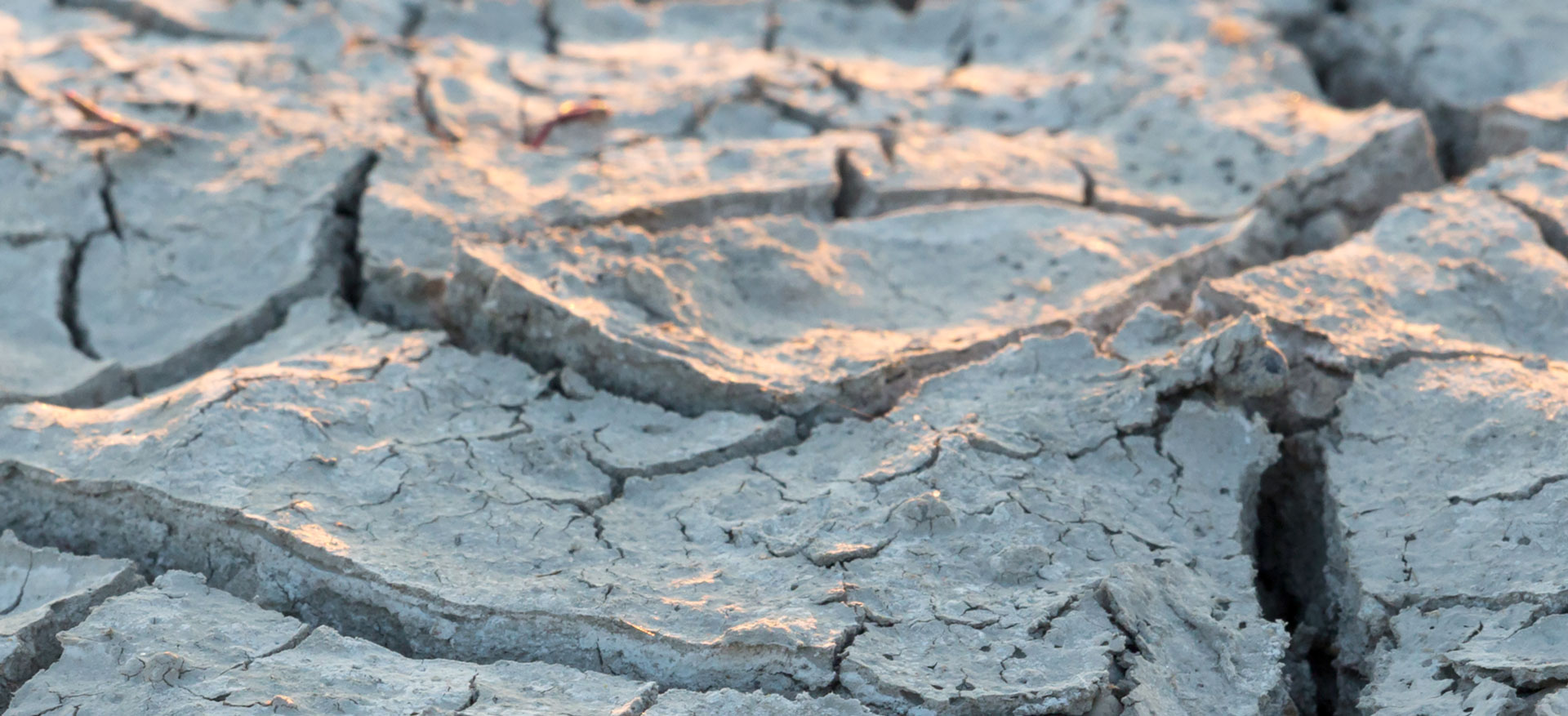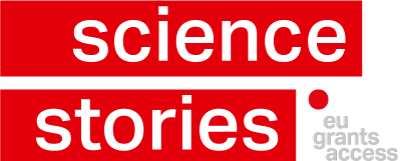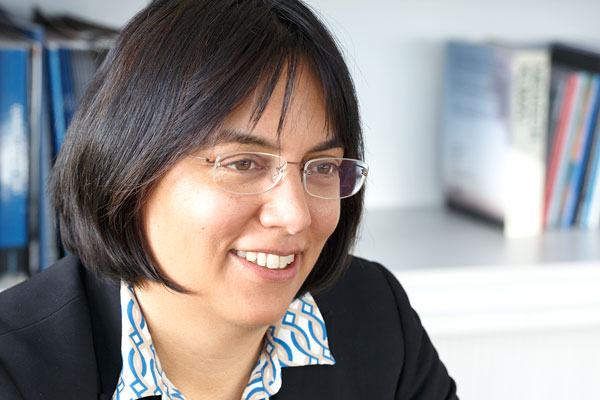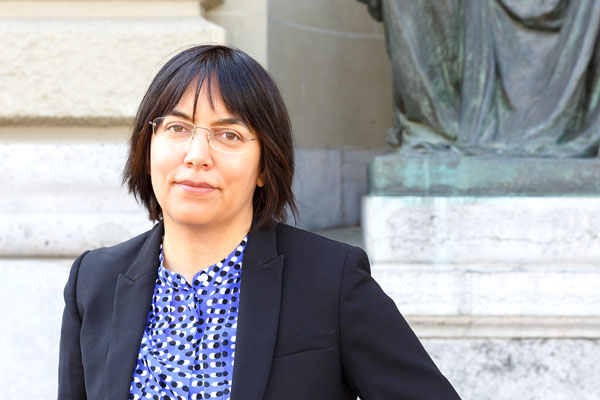
Research in the climate emergency
Climate scientist Sonia Seneviratne from ETH Zurich is currently working on three concurrent Horizon 2020 research projects, and two more will be launched by Horizon Europe in autumn. In addition, she has taken a leading position in two of the latest reports of the Intergovernmental Panel on Climate Change (IPCC): a look into the everyday life of a very busy scientist.
«Switzerland is particularly affected by the increase in heat waves, heavy precipitation and droughts – and there are already climate deaths here too,» Sonia Seneviratne states while looking into the audience in the National Council Chamber of the Federal Parliament in Bern. In a clear, calm voice, the climate scientist explains factually but firmly and with simple words in five points and ten minutes the current state of global warming, extreme events and regional climate. That was on the 2nd of May 2022, when, at the invitation of National Council President Irène Kälin and the Swiss Academy of Sciences SCNAT, eight leading researchers presented the latest research results on climate and biodiversity to parliamentarians in short speeches – and showed how urgent the need for political action is.
«I’m neither saying
that planting trees
won’t be of any use,
nor that this will save us
either.»
Sonia Seneviratne is used to public appearances. As an expert on land-climate dynamics and extreme climate events, she has been consulted for years when the media are looking for explanations of phenomena such as drought, heat waves, soil subsidence or major storms. As coordinating lead author of the first part of the 6th Assessment Report of the Intergovernmental Panel on Climate Change (IPCC), which was published in August 2021, she was frequently featured on various television channels.
A lot of work besides work
The Professor at the Institute for Atmospheric and Climate Science at ETH Zurich had already contributed to the IPCC special report «Global Warming of 1.5 °C» in 2018 – also as lead author. Like all researchers, she did all the work for the IPCC on a voluntary basis – «in the evenings, while her children are sleeping», as it says in an SRF podcast. And yet she has been on the list of «Highly Cited Researchers» every year in a row since 2014. Highly cited researchers are those whose publications are in the top one percent of the most cited papers in their respective fields.
Now Sonia Seneviratne is devoting herself to five European research projects simultaneously. How does she manage that? The French-speaking Swiss with Sri Lankan and Vaudois roots sits relaxed in her office on the eighth floor of the institute building, which offers a great view over the city, and laughs: «It’s not quite as bad as it looks!» The only thing she hasn’t gotten around to is unpacking, she adds, pointing to a few boxes in a corner that are still from the move into the renovated building a few months ago. And she puts it into perspective: the EDIPI project, which is testing new analytical techniques for assessing weather extremes, is an EU-funded doctoral thesis. Another, MESMER-X, is almost completed and is a rather small project, but it plays a key role. In addition, the scientist points to her very competent team of collaborators who can take over technical work from her and co-supervise PhD students and researchers.
A tool for emission scenarios
The fact that five projects are running simultaneously at the moment is probably also due to the fact that Sonia Seneviratne makes an above-average number of submissions. She herself says modestly: «It just worked out well.» She sees the reason for the success in the urgency of research in this area.
The focus of her research is on evaluations of emission scenarios. Pathways for sustainable emissions are being investigated. The PROVIDE project, dedicated to the potential overshoot of temperature thresholds set in the Paris Agreement, aims to produce a dashboard for climate services. In the MESMER-X project – «A Modular Earth System Model Emulator for Regional eXtremes» – Seneviratne’s group has developed an emulator that can replace climate models and make climate calculations very quickly. This allows researchers to calculate feedbacks for different pathways. «In many low-emission scenarios, it is assumed that we would plant a lot of trees to capture CO2. But it is not entirely clear whether these trees can survive. So, it is also a question of how realistic these scenarios are,»explains the researcher.
«Now it is a matter of social,
i.e. human decisions.
We have a state of emergency.»
The different projects are interconnected: the Horizon Europe projects, which will start this autumn, are both partly based on the developed MESMER emulator – indeed, they build on it. ForestNavigator focuses on the forest aspects for Europe. RESCUE or «Response of the Earth System to overshoot, Climate neUtrality and negative Emissions»examines the scenarios on a global scale.
Hence, MESMER-X is the smallest, but at the same time the most important project, a core element in Sonia Seneviratne’s research. «It is also the link to our former projects, where we were able to derive relationships between changes in climate extremes and global warming. The emulator is based on these findings,» the researcher states. At the same time, it is the project that is closest to her heart, as she admits: «It is also special for me because I wrote it because of the pandemic.» During the lockdown, she wanted to submit an SNSF Project on the emulator. But then her husband became ill with COVID symptoms and she missed the deadline. But the researcher saw that she could still submit an ERC Proof of Concept Project, the deadline for which was six weeks later. So, she quickly wrote an ERC application with the same idea – and it worked out. More than that, in this small project Sonia Seneviratne was able to build collaborations with other researchers that have now led to the larger projects PROVIDE, ForestNavigator and RESCUE. «We had the opportunity with the proof of concept to develop something that can be applied – with societal benefits. This also helped for the acceptance of the other projects. Because I could say that we already had a tool for our projects.»
For the forests, but against greenwashing
The ForestNavigator project aims to assess the climate protection potential of Europe’s forests and forest-based sectors by modelling policy pathways and informing public authorities on the most appropriate approach to forest policy and the bioeconomy. One of the many afforestation projects, of which some are highly controversial? The expert on vegetation-climate dynamics clearly states to the contrary: «I’m neither saying that planting trees won’t be of any use, nor that this will save us either. The project is about careful planification of forest management in Europe.»The most important message is not to cut down the existing forests, she explains. Because the primary forests have a very important function.
Afforestation is also relevant, but she emphasizes that it has to be done very carefully: «You can’t just plant any trees anywhere. Some will not survive at all or you might even damage the biodiversity. I am investigating in which regions trees could survive,» she clarifies, «because the risk of fire is already high today, and with increasing warming this risk is growing.» Other issues she investigates concern agriculture. With climate change, more land may be needed to ensure food security. So, in addition to her work in the ForestNavigator project, Sonia Seneviratne’s research encompasses all land use – just as land use and climate change are interconnected.
For technology, but against technowashing
In addition to afforestation, RESCUE is concerned with further scenarios for carbon dioxide removal (CDR) from the air in order to slow down the rise in temperature. In the project, these methods are being investigated, and among other questions how extreme climate events may limit the potential of CDR. «These CDR technologies, for example those of the ETH Zurich spin-off company Climeworks, need to be further developed. But there is a danger of technowashing, that is, the view that these methods can absorb all the emissions,» warns Sonia Seneviratne. She estimates based on existing IPCC scenarios that CDR, both based on afforestation and new technologies, will be able to capture about ten percent of present-day emissions in the future. Hence, 90 percent of the required mitigation effort is about bringing CO2 emissions to zero and not compensating them – and this has to be made clear to everyone.
«We have reached the point in climate science where we know everything that is relevant for society decisions on climate mitigation and the main issue is about communication,» the researcher emphasises. And: the urgency of the matter today demands that one goes public. There are no longer any major uncertainties about climate change. Only the emissions scenarios are still uncertain. Sonia Seneviratne speaks plainly: «Now it is a matter of social, i.e. human decisions. We have a state of emergency. We have barely eight years left to halve emissions and only two years left to reverse the trend so that we do not exceed 1.5 °C global warming.»
In fact, Sonia Seneviratne has become a great communicator since the last IPCC report at the latest. A necessary evil or a new perspective in everyday research? Apparently, both apply to her. She likes to meet interesting people when she appears at events and to gain a better perspective on societal issues related to climate action. But she actually prefers to devote herself to her research: «The rest I do because it’s urgent.» And when asked about the admirable intelligibility of her statements in public, she says: «They are so clear because I can’t use very complicated words. I think of it as how I would speak to my mother or my sister.» Oh, if only all researchers would do this!
In the 6th Assessment Report, Sonia Seneviratne was joined by Erich Fischer and Martin Wild from the Institute for Atmospheric and Climate Science at ETH Zurich. At the moment, the lead author has no plans to participate again in the next Assessment Report, which is due in six years. Not because of the work, as she says, but because it is now society and no longer science that is being called upon: «We know more than enough to act now. Now it’s about whether society takes this information and does something about it,» she explains. She also cites family reasons. Nevertheless, she will continue to be very busy: the two major projects ForestNavigator and RESCUE alone will run until 2026.
Interview mit Sonia Seneviratne
Sonia Seneviratne
Sonia Seneviratne has been Full Professor of Land-Climate Dynamics at ETH Zurich since 2016. Born and raised in Lausanne in 1974, she studied Biology at the University of Lausanne and then Environmental Physics at ETH Zurich and as a Visiting Student at the Massachusetts Institute of Technology MIT, USA. She earned her PhD in Climate Research at the Institute for Atmospheric and Climate Science at ETH Zurich. In 2003-2004 she worked as a Postdoctoral Researcher at NASA/Goddard Space Flight Center in Greenbelt, USA, and then returned to ETH Zurich as a Senior Scientist. In 2007 she was appointed Assistant Professor, promoted to Associate Professor in 2013 and in 2016, she became a Full Professor. Sonia Seneviratne has received several awards for her research, including the James B. Macelwane Medal from the American Geophysical Union AGU (2013), a Consolidator Grant from the European Research Council ERC (2014-2019) and the Hans Oeschger Medal from the European Geosciences Union EGU (2021). She has contributed to several reports of the Intergovernmental Panel on Climate Change (IPCC). She was a Coordinating Lead Author of the Special Report on Climate Extreme Events (2009-2012), Lead Author of the Special Report on 1.5 °C Climate Warming (2017-2018) and Coordinating Lead Author of the 6th Assessment Report (2018-2021). Sonia Seneviratne is married and mother of two children.
Horizon Europe Projects
RESCUE: Response of the Earth System to overshoot, Climate neUtrality and negative Emissions
- Programme: Collaborative project with 17 partners
- Duration: 1. September 2022 – 31. August 2026 (48 months)
- Contribution for ETH Zurich (financed by SBFI): 719’083 €
ForestNavigator: Navigating European Forests and Forest Bioeconomy sustainable to EU Climate Neutrality
- Programme: Collaborativs project with 24 partners
- Duration: 1. Oktober 2022 – 31. September 2026 (48 months)
- Contribution for ETH Zurich (financed by SBFI): 429’650 €
Horizon 2020 projects
MESMER-X: A Modular Earth System Model Emulator for Regional eXtremes
- Programme: ERC Proof of Concept
- Duration: 1. March 2021 – 30. June 2022 (21 months)
- Contribution for ETH Zurich:150’000 €
PROVIDE: Paris Agreement Overshooting – Reversibility, Climate Impacts and Adaptation Needs
- Programme: Kollaboratives Projekt mit 14 Partnern
- Duration: 1. September 2021 – 31. August 2024 (36 Monate)
- Contribution for ETH Zurich: 643’595 €
ec.europa.eu/eip/agriculture/en/news/provide-project-0
EDIPI: european weather Extremes: DrIvers, Predictability and Impacts
- Programme: Marie Skłodovska-Curie Innovative Training Networks
- Duration: 1. March 2021 – 28. February 2025 (48 months)
- Contribution for ETH Zurich: 265’617 €





